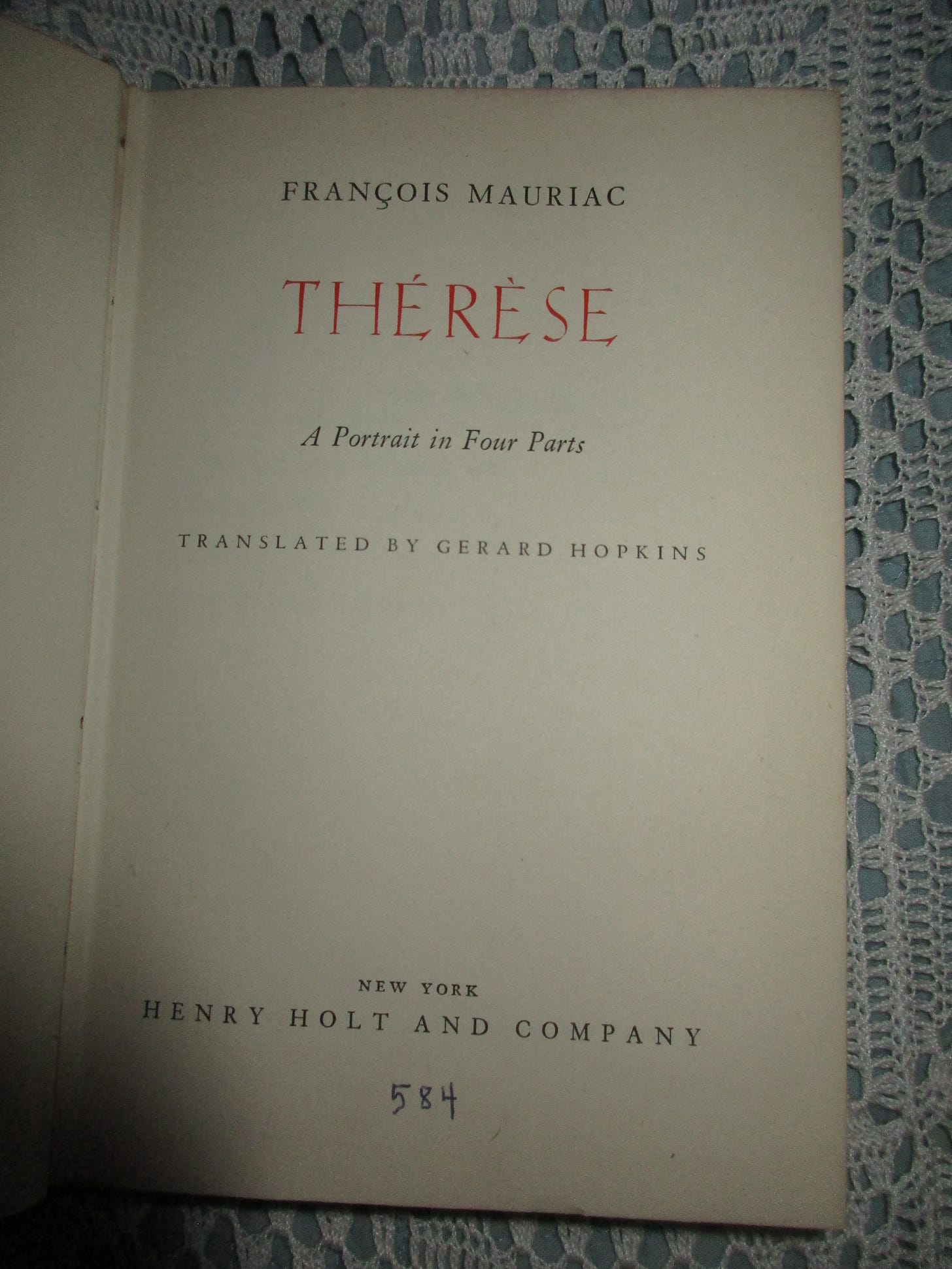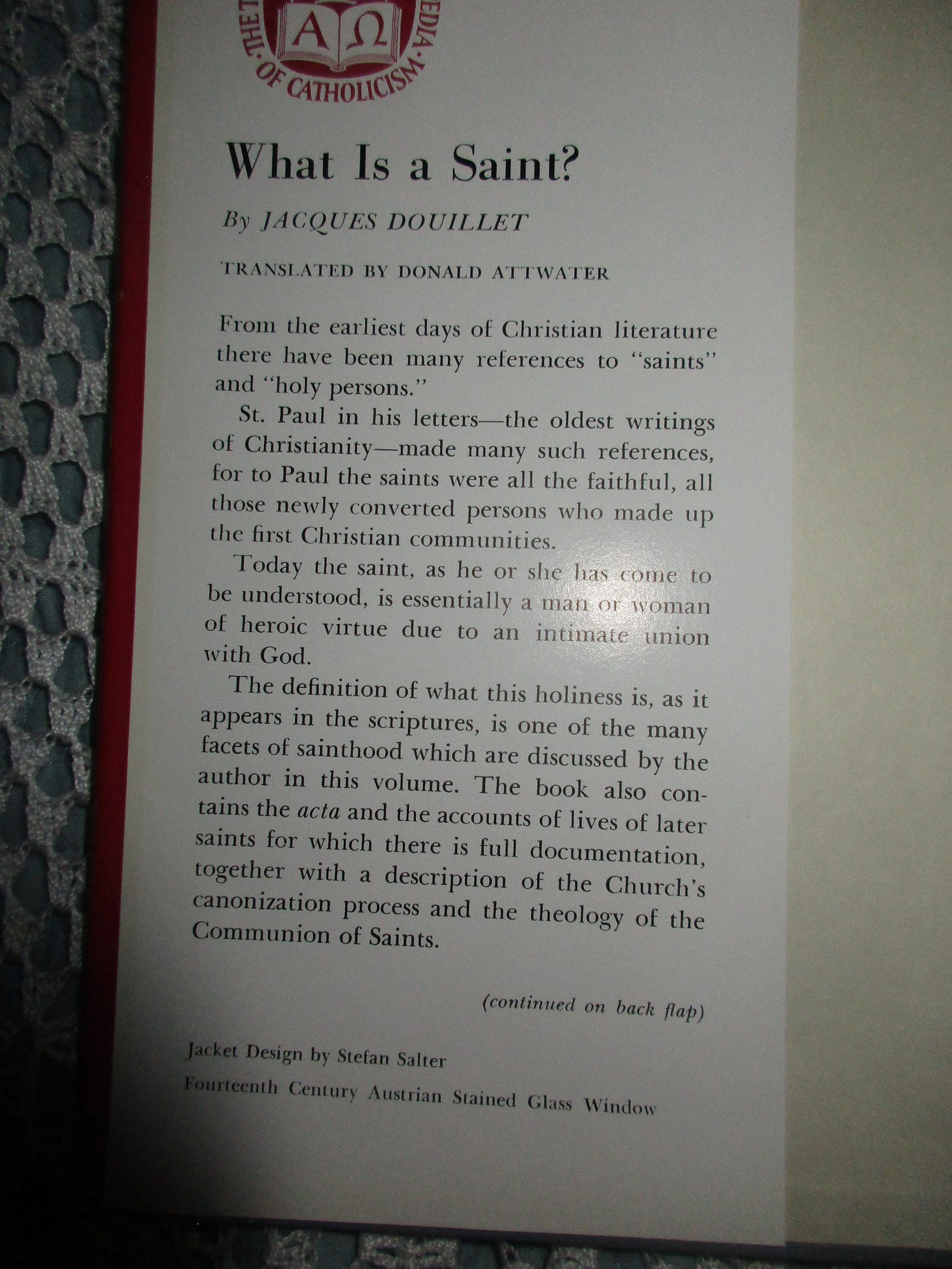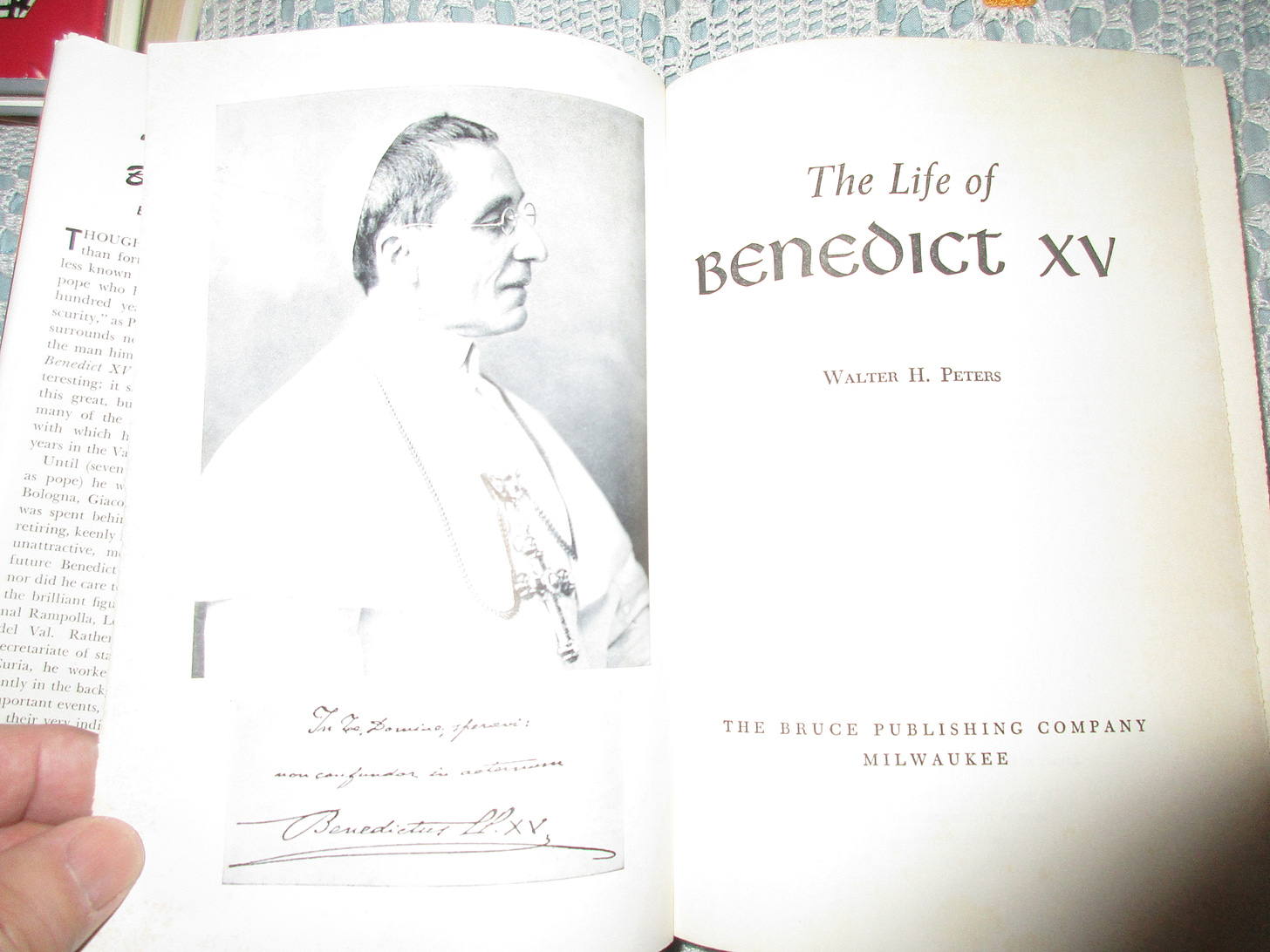Another Post
Sometimes Titles Are Hard
I am glad to be Catholic. My own path has taken me on some far-flung paths. I’ve tried some alternatives. The Catholic Faith and Church is home, and the only path I’m concerned about now is the one to Heaven.
This is the first book I’ve read by Mauriac, and it makes me want to read others. This was/is not an easy book, because it concerns a heinous crime, forgiveness and lack of forgiveness, mortal sin, broken relations, and death. In part it is like Graham Greene’s books, where we are often left wondering if a character may have condemned himself to the flames of hell. Therese: A Portrait in Four Parts by Francois Mauriac (NY: Henry Holt, 1947 first printing, hc w/school markings). Re-published in full by Cluny.
What Is a Saint? by Jacques Douillet (NY: Hawthorn, 1958, hc, 1958 imprimatur, #46 in series). A good brief introduction to the Catholic Church’s teaching on saints, including well-known examples of saints, canonization process (before JPII’s changes), relics, veneration, and more.
Benedict XV is not a well-known modern pope. He was overshadowed by his predecessor (St. Pius X) and successors (Pius XI and XII). While he is noteworthy for his efforts to intervene on behalf of peace during WWI, and for his promulgation of the 1917 Code of Canon law (mostly done on Pius X’s watch), he has no monumental encyclicals attached to his legacy. This book, The Life of Benedict XV by Walter H. Peters (Milwaukee: Bruce Publishing, 1959, hc, 1959 imprimatur) reveals this lesser-known pope’s distinguished ecclesiastical career and a papacy of integrity.
“Here, in one volume, is a guidebook to the interiors of churches and the significance of the dress of the priesthood” (from the inside cover). Vestments and Church Furniture by Robert Lesage (NY: Hawthorn, 1960, hc, 1959 imprimatur, #114 in the series). The author served as MC for the Archbishop of Paris.
About the authors: Auvray was co-editor of the Jerusalem Bible; Poulain was a priest and professor; Blaise was a professor of languages. Published in 1960 with 1959 imprimatur, this volume is #116 in the series. Part I covers Semitic languages, especially Hebrew and Aramaic; Part II covers Greek; Part III looks at Latin.








Greg, I’m always amazed whenever I’m reminded how well-read some of these historical figures were. To not only be well versed in theology, but also linguistics … really is a testament to their commitment to learning.